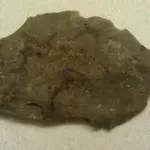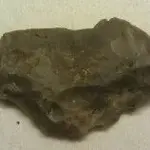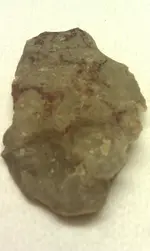You are using an out of date browser. It may not display this or other websites correctly.
You should upgrade or use an alternative browser.
You should upgrade or use an alternative browser.
heat treated ?
- Thread starter mission
- Start date
kansa54
Full Member
Mission, once again it is hard to tell from a photo, but it is possible the piece has been heat treated. Sometimes in a really hot fire you will get the pot marks that are on the piece. I have seen some flint knappers biface a few blades and then heat treat them but for the majority they will spall out several pieces and than heat them. The reason for heat treating is to make the material easier to knap. If the material is good enough to finish a point from there would be no need to heat it, although some cherts when heated will change to a more appealling color. Don't know if that mattered to the knapper back then.
monsterrack
Silver Member
- Joined
- Apr 15, 2013
- Messages
- 4,419
- Reaction score
- 5,827
- Golden Thread
- 0
- Location
- Southwest Mississippi
- Detector(s) used
- Garrett, and Whites
- Primary Interest:
- All Treasure Hunting
When you heat treat stone it binds the silica together so it can be flaked easier , some agates will change colors, the brown chert in my area will turn red to a small depth of the stone. A lot of stone has a dull luster to before heating and after it will have a gloss shine. Novaculite from Arkansas comes in all colors it always has a gloss after heating, if it is gray it turns white, if it is translucent it may go pinkish or get clearer, black stays black but has a high gloss to it. I don't really know of a set time period on heat treating, someone else may know for sure. Most native people would dig a pit a few feet deep, layer the bottom in sand 6in or so thick, place the stone they wanted to treat, then cover them with more sand 6in or so then cover with dirt and build a fire for a day or little longer, then let it cool down.
Last edited:
Similar threads
- Replies
- 11
- Views
- 658
- Replies
- 7
- Views
- 780
- Replies
- 4
- Views
- 510
Users who are viewing this thread
Total: 1 (members: 0, guests: 1)
Latest Discussions
-
-
-
Confederate Gold from the Civil War was Found in a Shocking Place
- Latest: achanceforgold
-






